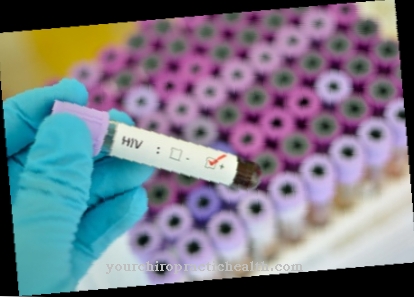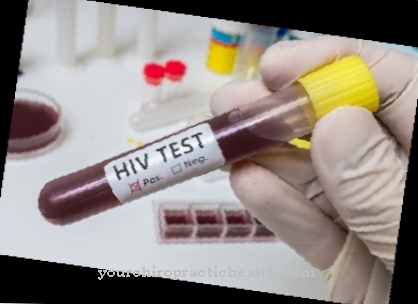Amphotericin B is a very effective antifungal agent. It is used to fight fungal infections. Although it is a popular drug due to its high degree of effectiveness, it also has a bad reputation due to its numerous side effects.
What is amphotericin B?

Amphotericin B is a drug that is administered orally or as a solution for injection and is obtained from bacteria of the Streptomyces nodosum type. The drug settles in the plasma membrane of fungi and ensures complete death of all fungi in all phases of their growth in the short and long term.
For many decades, it was the most effective antifungal agent, as very few types of fungus are resistant to treatment with amphotericin B.
Pharmacological effect
If no side effects occur, amphotericin B should only act on fungal infections that are either in the mouth or in the digestive tract. However, treatments for local fungal infections on the skin are also possible.
Theoretically, Amphotericin B can also fight infections in the respiratory tract, internal organs and urinary tract, but due to the large number of side effects, most doctors resort to other preparations if possible. Amphotericin B either reaches the infected site locally (which is the case, for example, on the skin or in the oral cavity and intestine) or in the form of an injection via the bloodstream to the target site.
The frequent side effects mentioned result, among other things, from the fact that amphotericin B sometimes not only attacks the fungi, but also cell membranes, which belong to healthy cells in the organism. Due to its proven effectiveness, amphotericin B is rarely not used in severe cases. Amphotericin B is usually used until the fungal infection has been proven to be eliminated. This can be the case after a few days, but the treatment can extend over six to eight weeks.
Medical application & use
Amphotericin B is used as an antifungal agent to fight malignant fungal infections. It is used to eliminate yeast infections that have mainly accumulated in the oral cavity and gastrointestinal tract.
Treatment can be difficult for the patient, as care must usually be taken to administer the doctor-selected dose four times per day. Amphotericin B is usually administered orally in the form of tablets, but injection solutions are also available. Both variants can effectively fight both mild and severe to very severe infections. The drug can only treat acute fungal infections and is not suitable for prevention.
These infections include histoplasmoses and blastomycoses, and infections with so-called sprout fungi can also be combated by amphotericin B. Aspergillus fumigatus molds are also susceptible to treatment with amphotericin B. There are no known interactions with other drugs. Larger, systemic diseases must not be treated with the use of amphotericin B. The drug is suitable for patients of all ages and may also be used with caution in pregnancy or during breastfeeding.
Risks & side effects
Unfortunately, it is a drug with numerous side effects. Amphotericin B can cause permanent damage to the kidneys. The severity of the damage depends on the total amount of medication administered, which is why amphotericin B should be administered in the lowest possible doses (which may vary from patient to patient).
Amphotericin B can also lead to fever or chills immediately after ingestion, as well as nausea and vomiting. Headaches and shifts in the body's electrolyte balance are also among the commonly observed side effects.
Liver damage and anemia are less common. Muscle pain that cannot be precisely localized is less of a complaint.However, numerous side effects can either be reduced or completely eliminated by choosing the lowest possible dosage of amphotericin B at the start of treatment.













.jpg)

.jpg)
.jpg)











.jpg)